Types of Offshore Supply Vessels
The information on this page is available in the OCSNCOE's Introduction to Offshore Supply Vessels document, that includes both the regulatory history and an overview of the different types/categories of OSVs. A one-page regulatory summary is also available as the OCSNCOE's "OSV 101" document.
Offshore Services
An “offshore supply vessel” is defined in 46 CFR 125.160 as a vessel that is propelled by machinery other than steam, that does not meet the definition of a passenger vessel, is of more than 15 GT, and that regularly carries goods, supplies, individuals in addition to the crew, or equipment in support of exploration, exploitation, or production of offshore mineral or energy resources.
The OSV has evolved into a vessel of many services to support exploration, exploitation, and production of offshore mineral and energy resources.
The following pictures and description of service are some of the common types of OSVs that we see in the industry today.
Supply
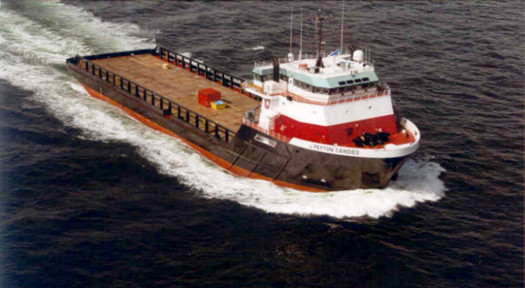 Supply OSVs (photo right by Otto Candies) carry goods, supplies, offshore workers, and equipment, including below-deck cargo such as dry bulk, liquid mud, freshwater, and excess fuel in support of exploration, exploitation, or production of offshore mineral or energy resources.
Supply OSVs (photo right by Otto Candies) carry goods, supplies, offshore workers, and equipment, including below-deck cargo such as dry bulk, liquid mud, freshwater, and excess fuel in support of exploration, exploitation, or production of offshore mineral or energy resources.
Many Supply OSVs have dynamic positioning capability, allowing the vessel to hold station close to an offshore facility while conducting cargo operations.
Supply OSVs may carry packaged hazardous material per DOT regulations and may transfer excess fuel to offshore facilities.
Support
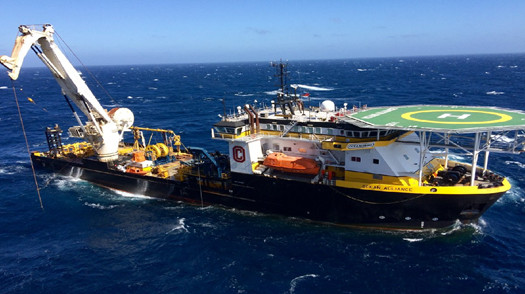 Support OSVs (photo right by Oceaneering) provide specialty services that are not generally offered by the basic supply OSVs.
Support OSVs (photo right by Oceaneering) provide specialty services that are not generally offered by the basic supply OSVs.
As drilling and production of natural resources expanded further offshore, the need for larger specialty vessels to support the increased depths of water was needed.
Services of support OSVs include supporting remote operating vehicles (ROVs) and seabed operations, such as riser and jumper connections.
Support OSVs vessels typically have dynamic positioning capability to allow them to hold station while conducting these operations.
Anchor Handling Tug Supply
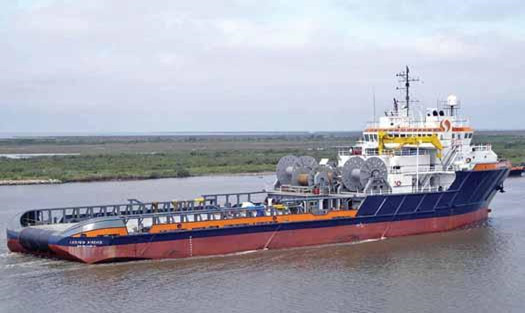 Anchor Handling Tug Supply OSVs (photo left by Seacor Marine) are built and designed to support the mooring-anchoring systems and towing of floating facilities and mobile offshore drilling units.
Anchor Handling Tug Supply OSVs (photo left by Seacor Marine) are built and designed to support the mooring-anchoring systems and towing of floating facilities and mobile offshore drilling units.
Like traditional OSVs, many anchor handling OSVs are built with an open deck and below deck tank arrangement to allow these vessels to provide basic OSV functions concerning deck cargo and bulk cargo carriage when not conducting anchor or towing work.
Dive Support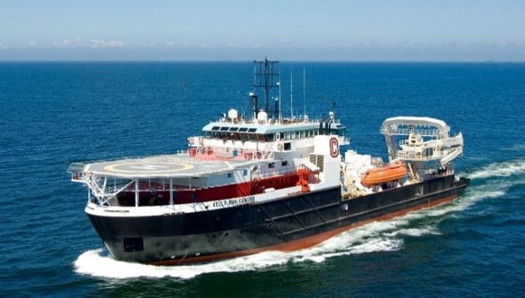
Dive Support OSVs (photo right by Otto Candies) were built or modified to support commercial dive operations on the OCS in support of the energy industry and have dynamic positioning capability or an anchor mooring system to allow the vessel to hold station while conducting dive operations.
Accommodation
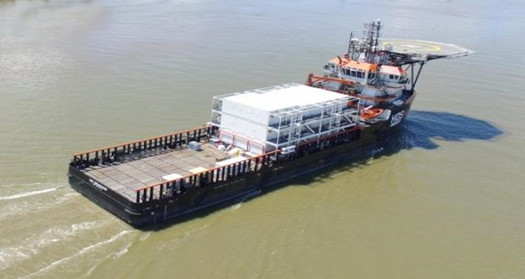 Accommodation OSVs (photo left by Hornbeck Offshore Services), or “floatels,” are purpose-built or modified existing vessels used to house and provide hotel services to crews working on offshore facilities.
Accommodation OSVs (photo left by Hornbeck Offshore Services), or “floatels,” are purpose-built or modified existing vessels used to house and provide hotel services to crews working on offshore facilities.
As shown in the picture above, this basic OSV was modified by adding accommodation modules on deck to provide housing for excess workers.
Accommodation vessels usually have dynamic positioning capability to allow the ship to hold station while conducting operations.
Fracture/Stimulation
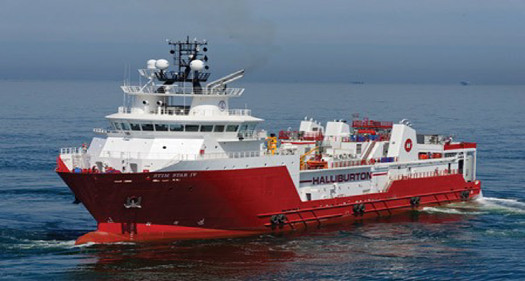 Fracture/Stimulation OSVs (photo right by Edison Chouest Offshore) were built or modified and equipped to conduct well stimulation or fracturing services on the OCS.
Fracture/Stimulation OSVs (photo right by Edison Chouest Offshore) were built or modified and equipped to conduct well stimulation or fracturing services on the OCS.
Well Fracturing is a process that uses water pressure to create fissures in deep underground shale formations that allow oil and natural gas to flow.
Well Stimulation is a process performed on an oil and gas well to help increase production by improving the flow of hydrocarbons from the reservoir into the wellbore.
Because of their work nature, these vessels carry applicable documents for the carriage of hazardous material by U.S. and/or IMO regulations.
These vessels typically have dynamic positioning capability to allow them to hold station while conducting operations.
Lift Boat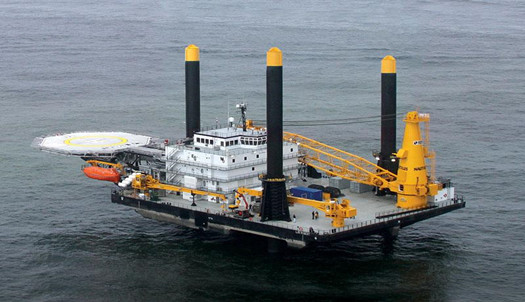
Lift Boats (photo right by Montco Offshore) are OSVs that have movable legs capable of raising the hull above the sea’s surface and generally operate as accommodation and a platform for service and repair work on OCS facilities. Because of the length of legs and air gap requirements, liftboats are limited by water depth.
Crew Boat
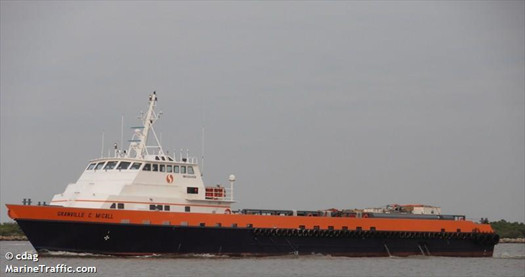 Crew boats (photo left by MarineTraffic.com) are designed and built to carry offshore workers and light deck cargo in the oil industry.
Crew boats (photo left by MarineTraffic.com) are designed and built to carry offshore workers and light deck cargo in the oil industry.
Crew boats are less than 100 GRT and are usually inspected under Subchapter T and/or L. The hull is generally constructed of aluminum, and are typically capable of higher speeds. Accommodations include arrangements for passenger seating.
A few vessels in this class may have dynamic positioning capability to allow them to hold station near an offshore facility while cargo is being offloaded.
Crew boats carry oilfield equipment and personnel, may also carry packaged hazardous material in accordance with DOT regulations, and may transfer excess fuel to offshore facilities.
Utility Vessel
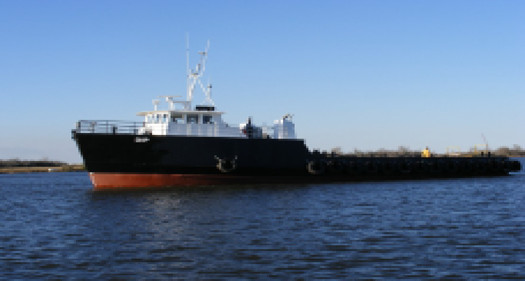 Utility OSVs (photo right by Gulf Offshore Logistics, LLC) are less than 100 GRT with the hull made of steel. These OSVs typically carry deck cargo and offshore workers.
Utility OSVs (photo right by Gulf Offshore Logistics, LLC) are less than 100 GRT with the hull made of steel. These OSVs typically carry deck cargo and offshore workers.
Below deck cargo is generally limited to fresh/potable water and excess fuel. Typical operating speeds average approximately 10 knots.
Accommodations usually included seating and sleeping arrangement for additional personnel.
A few vessels in this class may have dynamic positioning capability to allow them to hold station near an offshore facility while conducting cargo operations.
They carry oilfield equipment and personnel. They may also carry packaged hazardous material in accordance with DOT regulations.
These vessels may also transfer excess fuel to offshore facilities.
Older utility vessels (before March 15, 1996) may be inspected under Subchapters T or I.
Standby
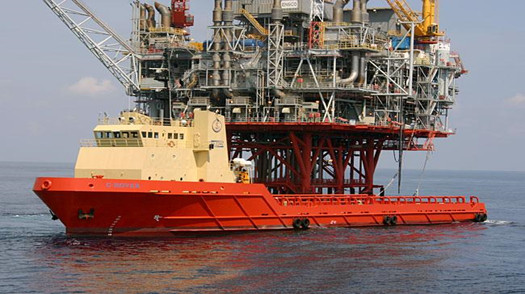 A standby vessel (photo right by Edison Chouest Offshore) is an OSV endorsed by the USCG to assist a facility or MODU in meeting its Emergency Evacuation Plan required by 33 CFR Subchapter N. Standby vessels are required to carry additional emergency equipment to facilitate rescue and evacuation of a facility or MODU during an emergency.
A standby vessel (photo right by Edison Chouest Offshore) is an OSV endorsed by the USCG to assist a facility or MODU in meeting its Emergency Evacuation Plan required by 33 CFR Subchapter N. Standby vessels are required to carry additional emergency equipment to facilitate rescue and evacuation of a facility or MODU during an emergency.
Standby vessels are used to augment primary lifesaving on a facility or MODU, allowing the unit to continue operations when the max capacity is exceeded or when lifeboats are sent to shore for servicing.
Large OSV
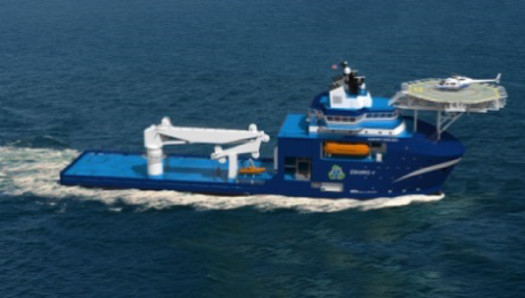 Large OSVs (photo left by Harvey Gulf International Marine) are OSVs of at least 6000 GT ITC with a keel laid date after August 18, 2014, and/or completed after August 18, 2016, and inspected under Subchapter “L.”
Large OSVs (photo left by Harvey Gulf International Marine) are OSVs of at least 6000 GT ITC with a keel laid date after August 18, 2014, and/or completed after August 18, 2016, and inspected under Subchapter “L.”
These OSVs of at least 6000 GT ITC became inspected under 46 Subchapter L as a result of Public Law 111-81 “USCG Authorization Act 2010”.
Before P.L. 111-81, and the USCG’s Interim Final Rule, OSVs of at least 6000 GT were inspected under Subchapter “I.”
Crew Transfer Vessel
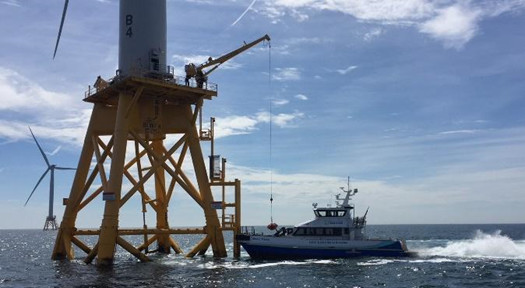 Offshore wind energy is considered an energy resource to apply vessel inspection laws. Vessels that support this industry may be inspected as OSVs. The primary function of a CTV (photo right by USCG OCSNCOE) is to carry crews to offshore wind turbine installations.
Offshore wind energy is considered an energy resource to apply vessel inspection laws. Vessels that support this industry may be inspected as OSVs. The primary function of a CTV (photo right by USCG OCSNCOE) is to carry crews to offshore wind turbine installations.
Crew Transfer Vessels are OSVs or small passenger vessels less than 100 GRT that may be inspected under Subchapter L and/or T.
The hull is generally constructed of aluminum, and they are typically capable of higher speeds to minimize travel times for wind turbine technicians.
Accommodations include arrangements for passenger seating.